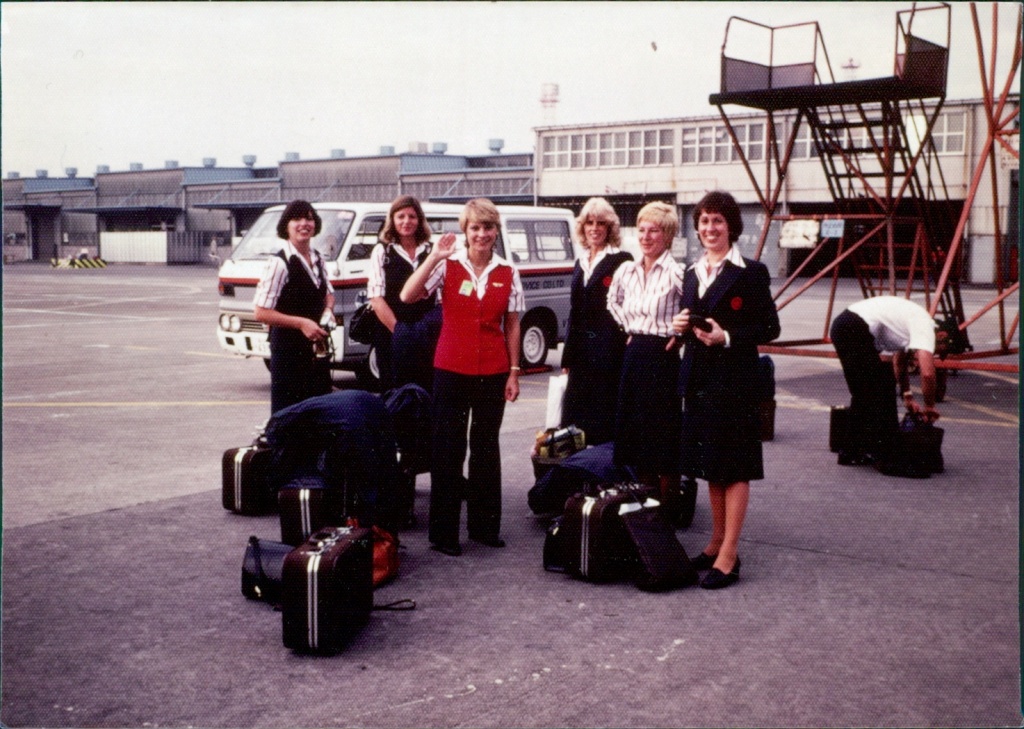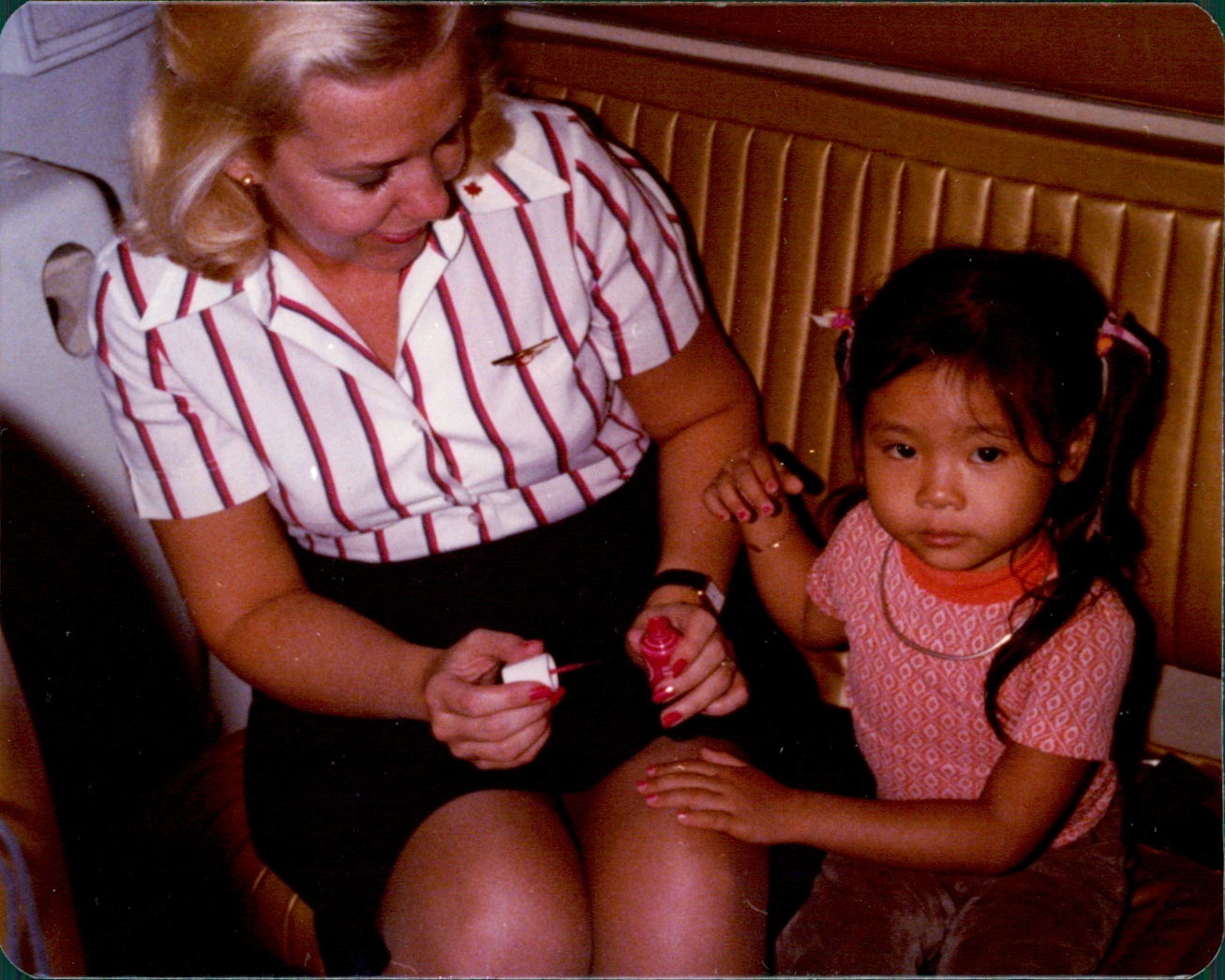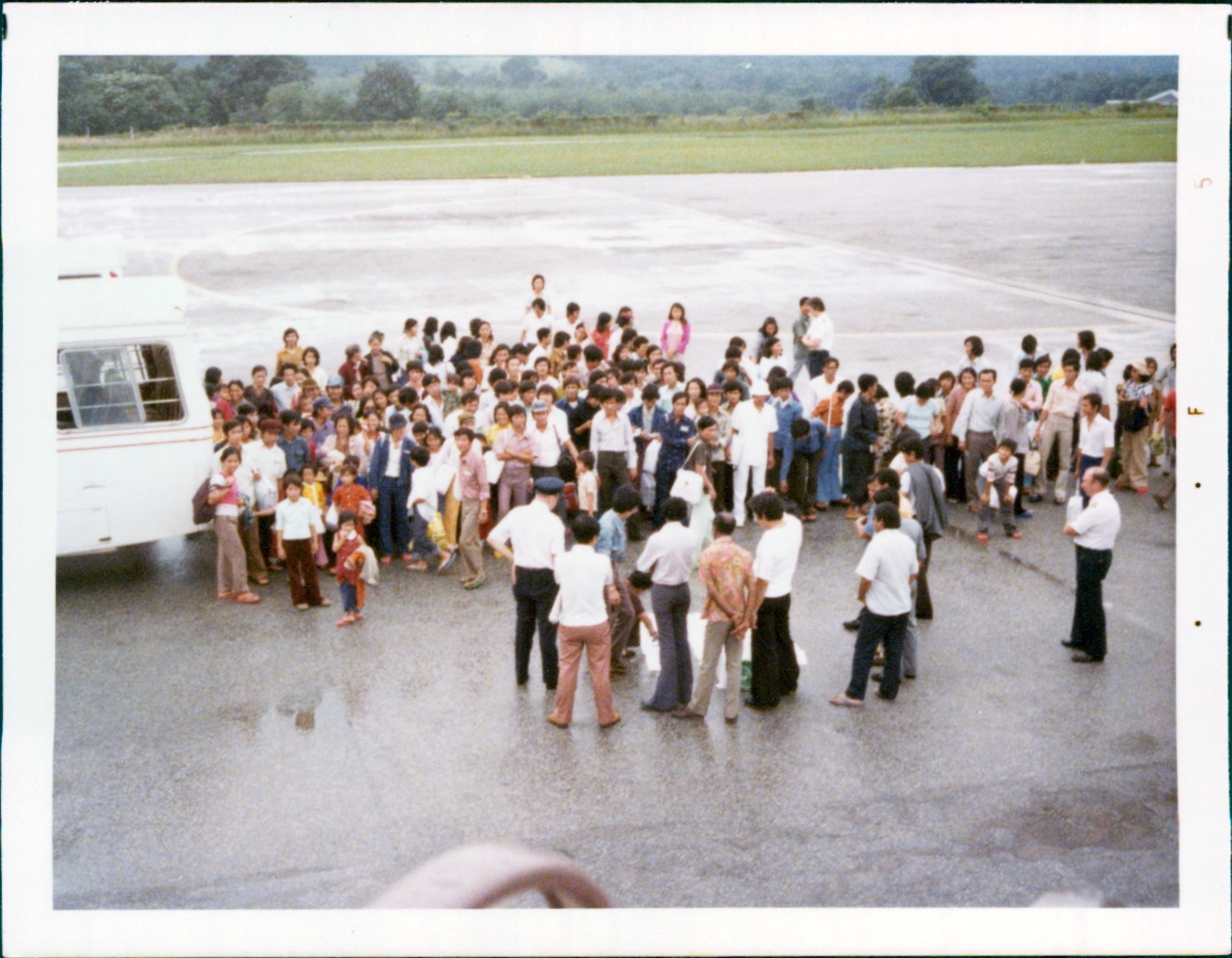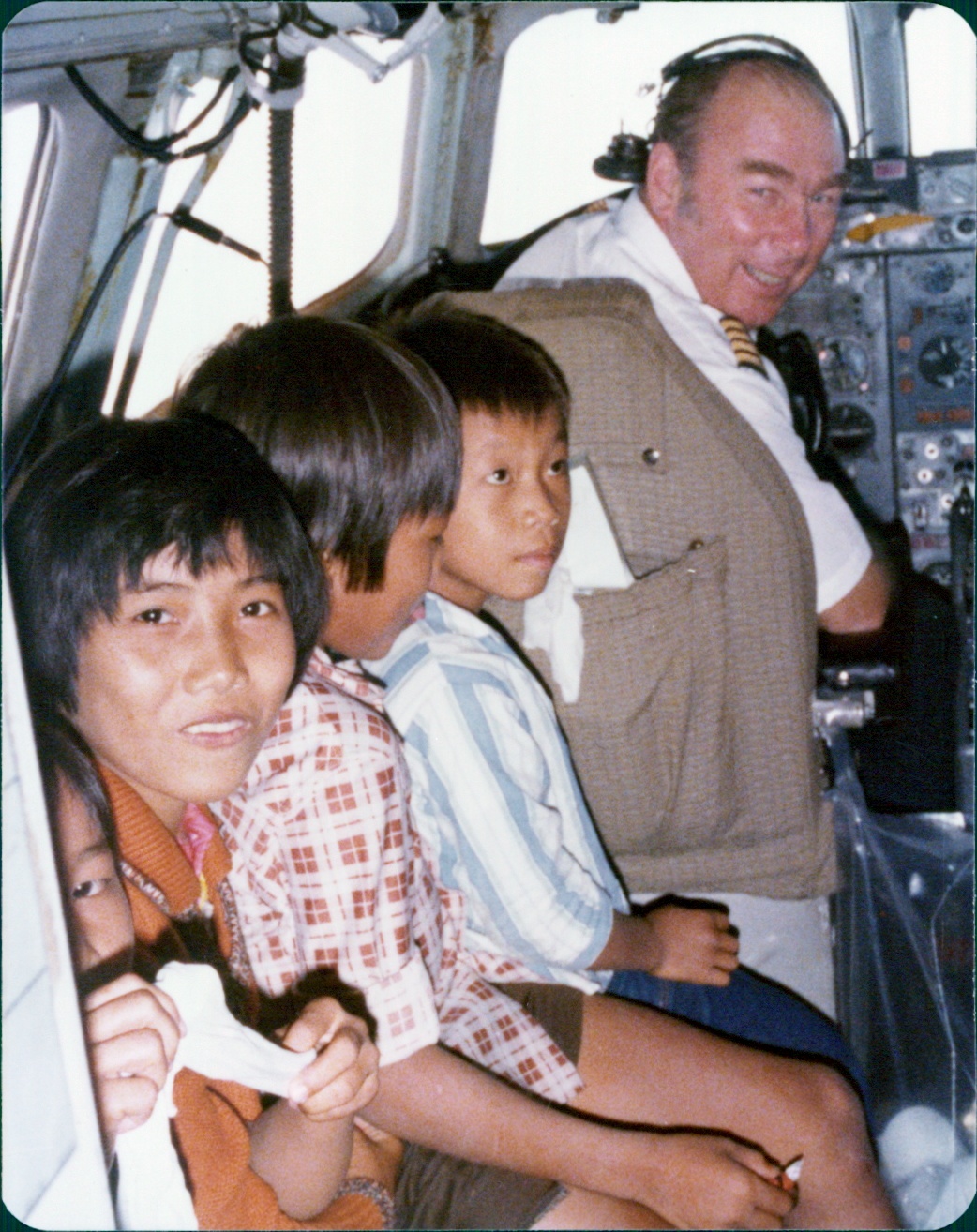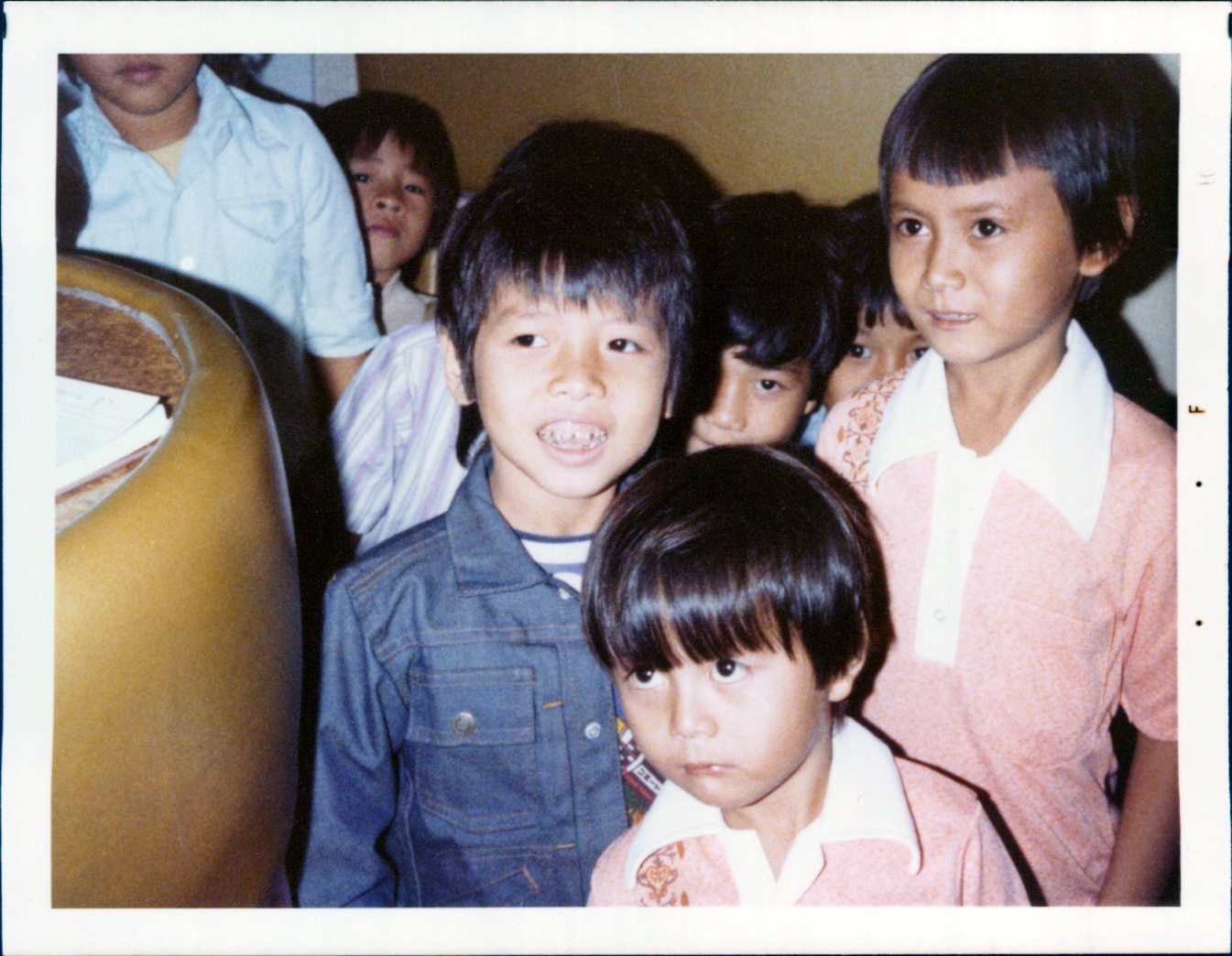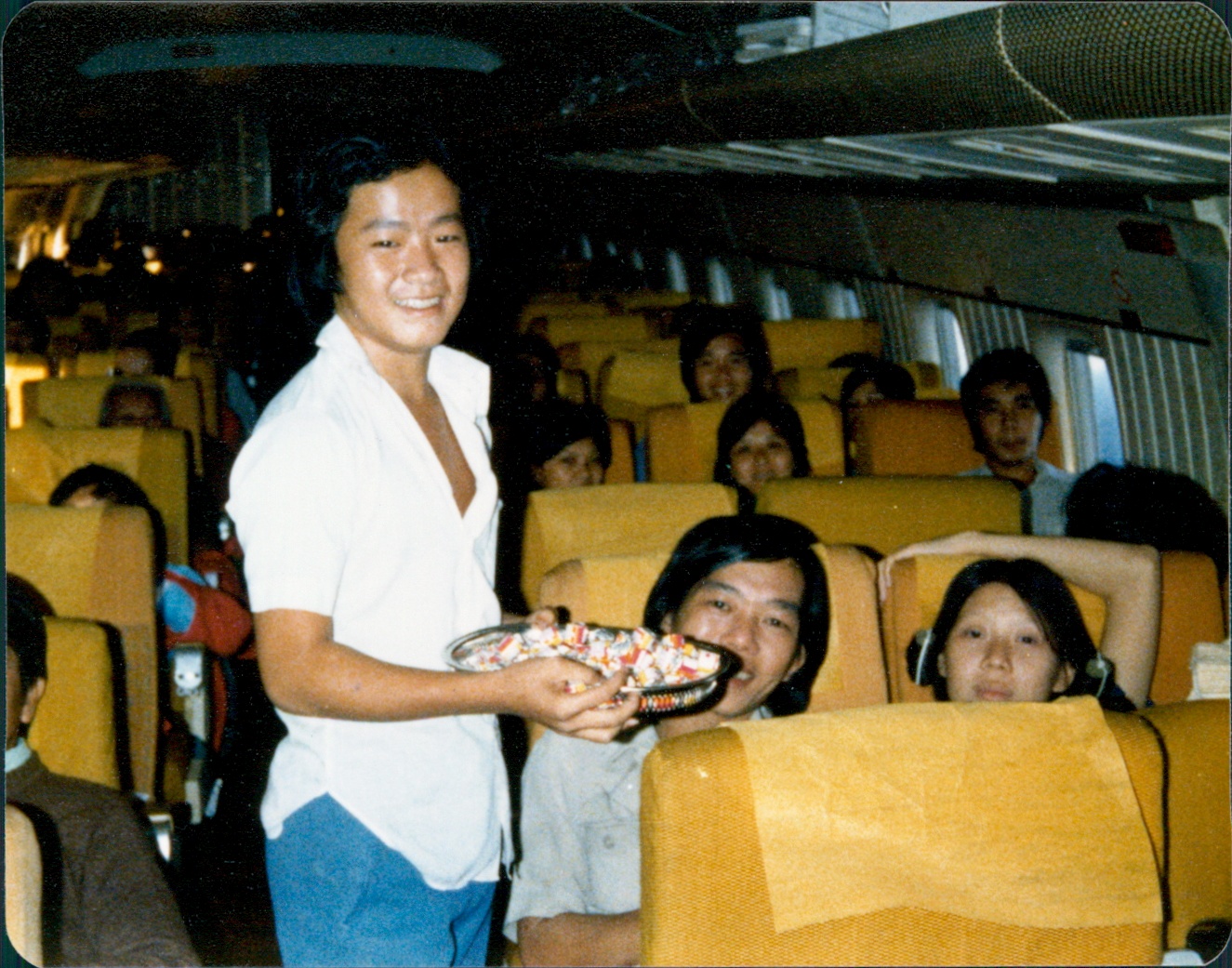Air Canada Vancouver-based crews were assigned to airlift Vietnamese refugees from various points in South-East Asia to major Canadian cities in 1979-1980. This refugee resettlement program would become one of Canada’s largest and most ambitious, bringing over 50,000 Vietnamese ‘boat people’ to our shores and throughout the country.
Working for Air Canada as a flight attendant from the Vancouver base and participating in the Vietnamese Refugee Charters during 1979-80 was an exceptional experience in my career.
The working crew would ‘ferry’ (i.e. travel on an empty aircraft) the DC-8 stretch aircraft to Tokyo, Kuala Lampur, Bangkok, or Hong Kong where the refugee camps were located. The pilots and the in-charge flight attendant would operate the flight, while the remaining crew members would read, listen to music, socialize, knit, sleep, etc. during the long flight to the designated city. The crews were put up in five star hotels and often had a day or more to explore the city. For many of the crew members, this was the first time to experience Asia with its unique culture and sights.
Working the return flights to Vancouver or Edmonton was memorable for each of us. The crew felt great empathy for the passengers as we were well aware of the challenging times the Vietnamese people had endured during the war, exiting Vietnam and then spending time in the refugee camps. Canada was now accepting refugees who were fortunate enough to be sponsored by churches, groups, and families across Canada. Each crew member would go out of their way to make the long flight as pleasant as possible for these special passengers. I recall how the passengers would be bused to the aircraft, many wearing fairly light clothing and summer sandals. There was very little checked baggage as most carried their worldly belongings with them.
Many young families boarded the flights. On one flight we had all 198 seats filled which included 98 children. The young tots were fully toilet trained, extremely well behaved, and would sleep anywhere there was space for them, often on their parents’ laps. As this was well before 9/11, crew members would take all of the children to visit the flight deck. The pilots were always so good with the children, passing out aircraft postcards and candy… including Halloween candy kisses. Many of the children may never heard of Halloween but they certainly knew about candy!
The passengers appeared very happy looking forward to a new life. I recall one young family with two daughters aged one and three. The mother could speak English and described some of their experiences. Prior to leaving Vietnam, her mother had given them white gold necklaces. While sailing to safer shores, their boat was attacked by pirates. The mother managed to hide her very young daughter. Their jewelry was not taken by the pirates because they wanted only yellow gold and did not know the value of white gold.
The young people were often very engaging and happy to interact with the crew. While some spoke English, others looked on with interest and using hand signals, we were able to communicate. Some would even help us during the flight by passing out cookies and candies to the passengers. They happily posed for any pictures we wanted.
After working a few of these flights, our crew began to collect clothing from family and friends, packed it in large boxes at the airport, and checked them into the belly of the aircraft. Prior to departure, these boxes were brought topside and stowed in the closets throughout the aircraft. Following the meal service, we would set up our ‘shop’ in the galleys. Crew members tried to distribute a suitable piece of clothing to as many passengers as possible. Most were thrilled with the jacket, sweater, or hat they received. I do remember one older lady who was not too enthusiastic with the hat she received, throwing it back to us while indicating she wanted a jacket… or nothing!
Preparing for landing, the passengers eagerly helped the crew to clean the cabin by passing all the bits and pieces to us as we went through the cabins. Upon landing, the cabin was as clean as when they had boarded. For our seasoned crews, this was certainly a first!
Landing in Edmonton during late Fall with temperatures dropping, I remember one elderly gentleman who was sitting at the rear of the aircraft. He was moving forward very slowly and was offered assistance. Holding onto the seat backs, he refused any help as he disembarked, determined to enter Canada on his own two feet!
The passengers were transported to the armed forces base where they were processed and then sent to their ‘new homes’ all across the country. They would now begin their new life in Canada. Years later, I worked with a flight attendant whose family had come to Canada as refugees and settled in Richmond, British Columbia. She was so proud of her family’s journey and expressed admiration to all of her teachers who had helped her adjust.
Recently speaking with a local gardener of Vietnamese descent, I was telling him of this project [the archive] to be displayed in Ottawa. Inquiring if he had come as a refugee, he had not… but his sister had come to Canada as a sponsored refugee and settled in Edmonton. She had, in turn, sponsored him. He and his family were now living in the Surrey/White Rock area, where his son is currently studying in the nursing program at the University of British Columbia.
Over the years, I have encountered many Vietnamese in the United States and Canada. Conversation always turns to how they came to North America. I fondly and proudly tell of my small role in transporting the refugees to their new country. In every instance, the individual related how grateful they are for the wonderful opportunity they have had for acquiring a better life in their second home.
Written by Patricia Talbot-Begin from Surrey, Canada.
